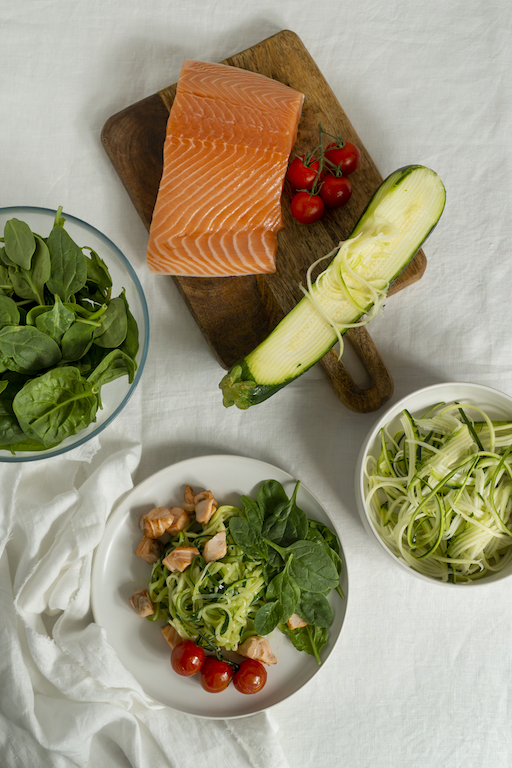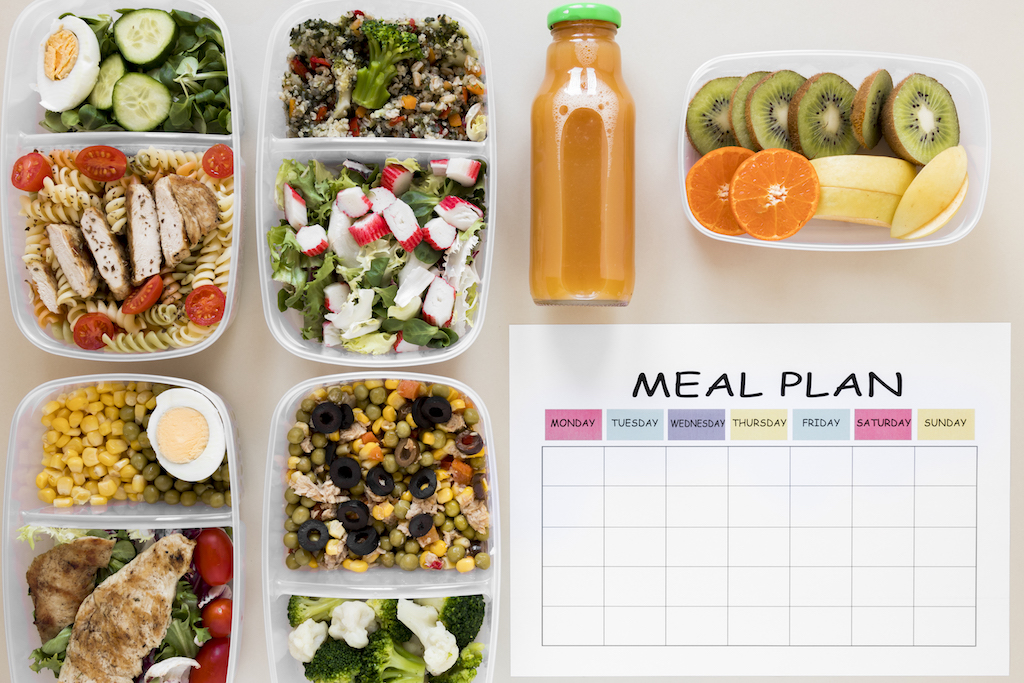In today’s fast-paced world, maintaining healthy eating habits can seem like a daunting task, especially with the convenience of fast food and processed snacks. However, transitioning to a healthier diet doesn’t have to be a herculean effort. By incorporating simple but effective changes into your daily routine, you can cultivate sustainable and nutritious eating habits that will bolster your overall well-being. In this in-depth article, we’ll delve into the practical steps you can take to not only develop but also maintain a balanced and healthful diet.
Understand the basics
Before diving into the specifics, it’s crucial to understand the fundamentals of healthy eating. A balanced diet should include a variety of foods from different food groups:
- Fruits and vegetables: Rich in vitamins, minerals, and fiber, these should make up a significant portion of your daily intake.
- Protein sources: Include lean meats, fish, poultry, beans, and tofu for essential amino acids.
- Whole grains: Opt for whole wheat, brown rice, quinoa, and oats for sustained energy.
- Healthy fats: Incorporate sources like avocados, nuts, seeds, and olive oil in moderation.

What are healthy eating habits?
Healthy eating habits are a set of dietary practices that prioritize nourishing your body with the right nutrients in the right amounts. These habits go beyond just what you eat; they also encompass how you eat, when you eat, and your relationship with food. Here are some key components of healthy eating habits:
Set clear, achievable goals
The foundation of building healthy eating habits lies in establishing clear and attainable goals. Take the time to determine what you aim to achieve with your dietary changes. Whether it’s weight loss, increased energy levels, or overall health improvement, having specific goals in mind will serve as a driving force, keeping you motivated and focused throughout your journey.

Plan your meals strategically
Effective meal planning is essential for sticking to a healthy diet. Chart out your meals in advance, encompassing breakfast, lunch, dinner, and snacks. By doing this, you reduce the likelihood of making impulsive, unhealthy choices when hunger strikes and time is scarce.
Embrace a balanced diet
A balanced diet encompasses a wide variety of foods from all food groups. Ensure your meals feature fruits, vegetables, whole grains, lean proteins, and healthy fats. This ensures that your body receives the essential nutrients, vitamins, and minerals it needs for optimal health.
Allowing yourself occasional treats can actually aid in maintaining your long-term commitment to a healthy diet. By giving in to your cravings once in a while, you prevent feelings of deprivation, making it easier to stick to your nutritional goals. Remember, the key is moderation. Plan your cheat days strategically, savor your favorite treats guilt-free, and then get back on track with your healthy eating habits. This balance ensures a happier and more sustainable journey towards a healthier you.
Improved physical health
One of the most obvious reasons why a healthy eating habit matters is its significant impact on your physical health. When you consume a balanced diet rich in essential nutrients, your body functions optimally. Nutrient-dense foods provide the vitamins, minerals, and energy necessary for your body to carry out its daily functions.
A healthy diet can help you:
- Maintain a healthy weight: Eating a balanced diet can help you achieve and maintain a healthy weight, reducing the risk of obesity and related health issues like diabetes and heart disease.
- Boost your immune system: Nutrient-rich foods enhance your immune system, making you less susceptible to illnesses and infections.
- Promote strong bones and teeth: Calcium-rich foods contribute to strong bones and teeth, reducing the risk of osteoporosis.
- Enhance cardiovascular health: A diet low in saturated fats and cholesterol can lower the risk of heart disease by reducing factors like high blood pressure and high cholesterol levels.

Mental health benefits
Your mental well-being is closely linked to your diet. A healthy eating habit can positively impact your mood, cognitive function, and overall mental health. Research suggests that certain nutrients can influence brain health, including omega-3 fatty acids found in fish, antioxidants in fruits and vegetables, and complex carbohydrates in whole grains.

Here’s how a healthy diet can benefit your mental health:
- Mood regulation: Nutrient-rich foods can help stabilize your mood and reduce the risk of mood disorders like depression and anxiety.
- Cognitive function: A healthy diet supports better cognitive function, including memory, concentration, and problem-solving skills.
- Reduced risk of mental illnesses: Some studies suggest that a balanced diet may reduce the risk of neurodegenerative diseases like Alzheimer’s and dementia.
In today’s fast-paced world, maintaining healthy eating habits is essential. By understanding the basics and setting achievable goals, planning meals strategically, and embracing a balanced diet, you can improve your physical and mental health. A balanced diet supports weight management, boosts the immune system, promotes strong bones, and enhances cardiovascular health. Moreover, it regulates mood, improves cognitive function, and reduces the risk of mental illnesses. Prioritizing nutritious foods in your daily meals is a powerful way to nurture both your body and mind, leading to a happier and healthier life. Your journey to better health begins with your food choices.
Working out with Fit at Home
Fit at Home is your NUMBER ONE fitness app! With our home workouts you can achieve your goals. Whether you want to lose weight, improve your strength with Pilates, stay fit during your pregnancy etc. It is all possible with Fit at Home. We offer various workouts from different trainers. Additionally, you can easily search for the workouts you’re looking for. Simply click on categories and find a workout that suits your needs for the day! The Fit at Home app is available 24/7 on-demand.

We love to make you move!
✓ Work out in front of your tv whenever you want
✓ 24/7 on-demand with more than 500 workouts
✓ For the whole family
Quinoa salad with roasted vegetables
Here’s a simple and nutritious recipe that you can incorporate into your routine to support healthy habits:
Ingredients:
- 1 cup quinoa, rinsed
- 2 cups water or vegetable broth
- 1 cup cherry tomatoes, halved
- 1 bell pepper, diced
- 1 zucchini, sliced
- 1 red onion, thinly sliced
- 2 cloves garlic, minced
- 2 tablespoons olive oil
- Salt and pepper to taste
- 1/4 cup feta cheese (optional)
- Fresh herbs (such as basil or parsley) for garnish
For the dressing:
- 3 tablespoons olive oil
- 1 tablespoon balsamic vinegar
- 1 teaspoon Dijon mustard
- Salt and pepper to taste
Preparation
- Prepare quinoa:
- In a medium saucepan, combine quinoa and water or vegetable broth.
- Bring to a boil, then reduce heat to low, cover, and simmer for 15-20 minutes or until quinoa is cooked and water is absorbed.
- Fluff the quinoa with a fork and let it cool.
- Roast vegetables:
- Preheat the oven to 400°F (200°C).
- In a large bowl, toss the cherry tomatoes, bell pepper, zucchini, red onion, and minced garlic with olive oil, salt, and pepper.
- Spread the vegetables evenly on a baking sheet lined with parchment paper.
- Roast in the preheated oven for 20-25 minutes or until the vegetables are tender and slightly caramelized.
- Make the dressing:
- In a small bowl, whisk together olive oil, balsamic vinegar, Dijon mustard, salt, and pepper.
- Assemble the salad:
- In a large bowl, combine the cooked quinoa and roasted vegetables.
- Pour the dressing over the mixture and toss until well combined.
- Garnish and serve:
- Crumble feta cheese over the salad if desired.
- Garnish with fresh herbs like basil or parsley.
- Serve the quinoa salad warm or chilled.
This quinoa salad is rich in fiber, vitamins, and minerals, making it a wholesome and satisfying meal. It’s also versatile, so feel free to customize it by adding your favorite vegetables or protein sources like grilled chicken or chickpeas. Enjoy cultivating healthy habits with this delicious and nutritious recipe!